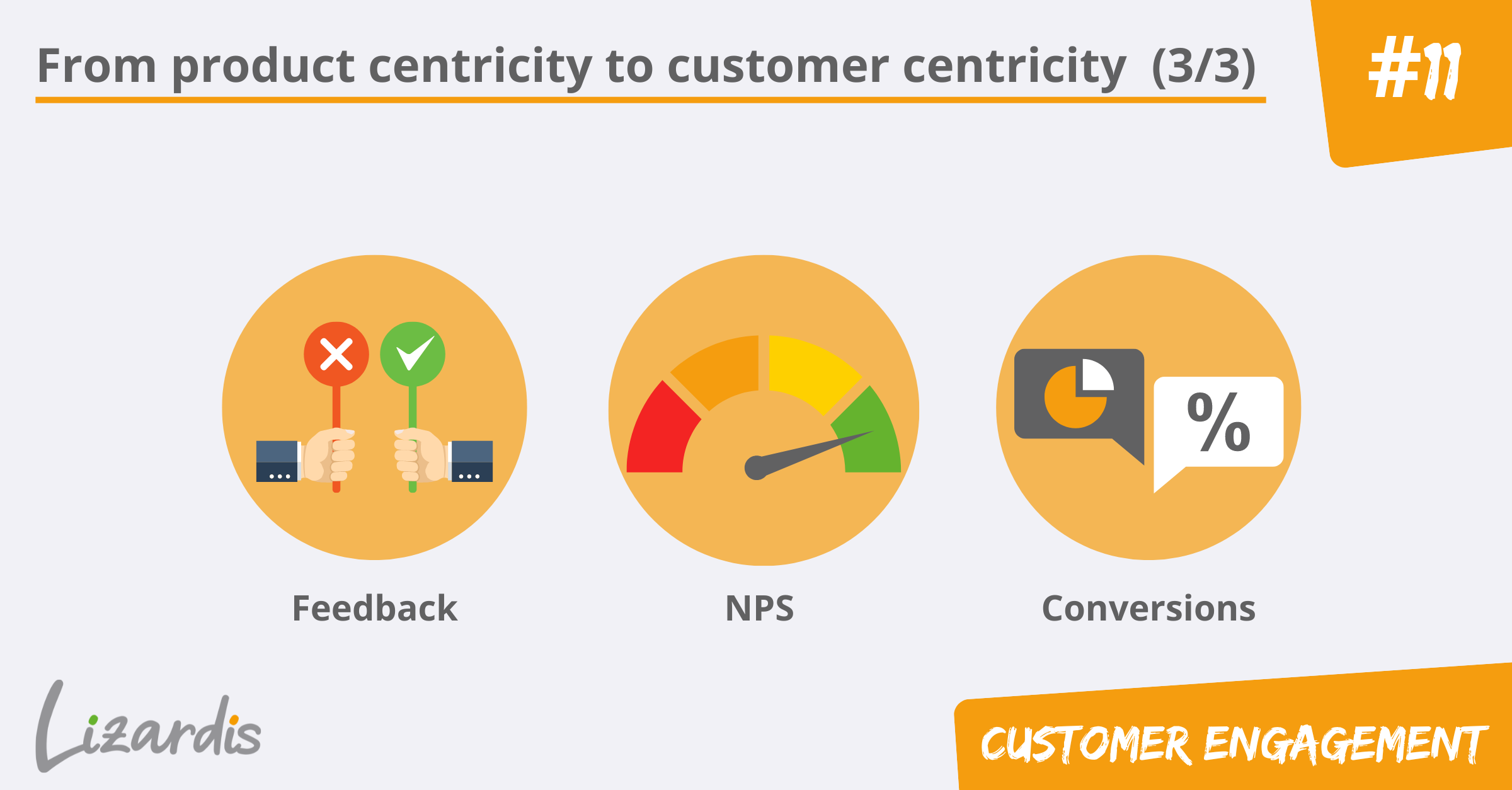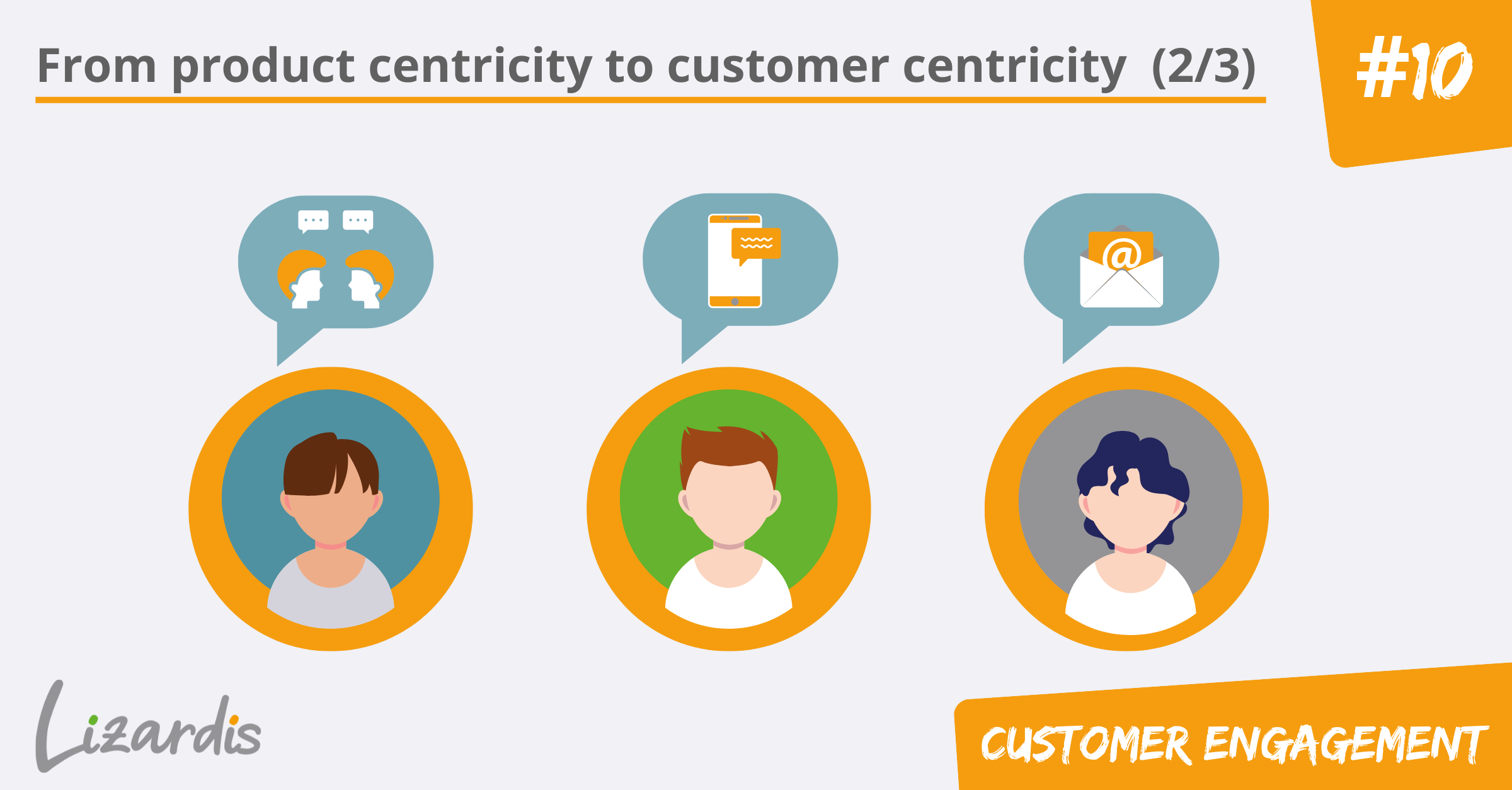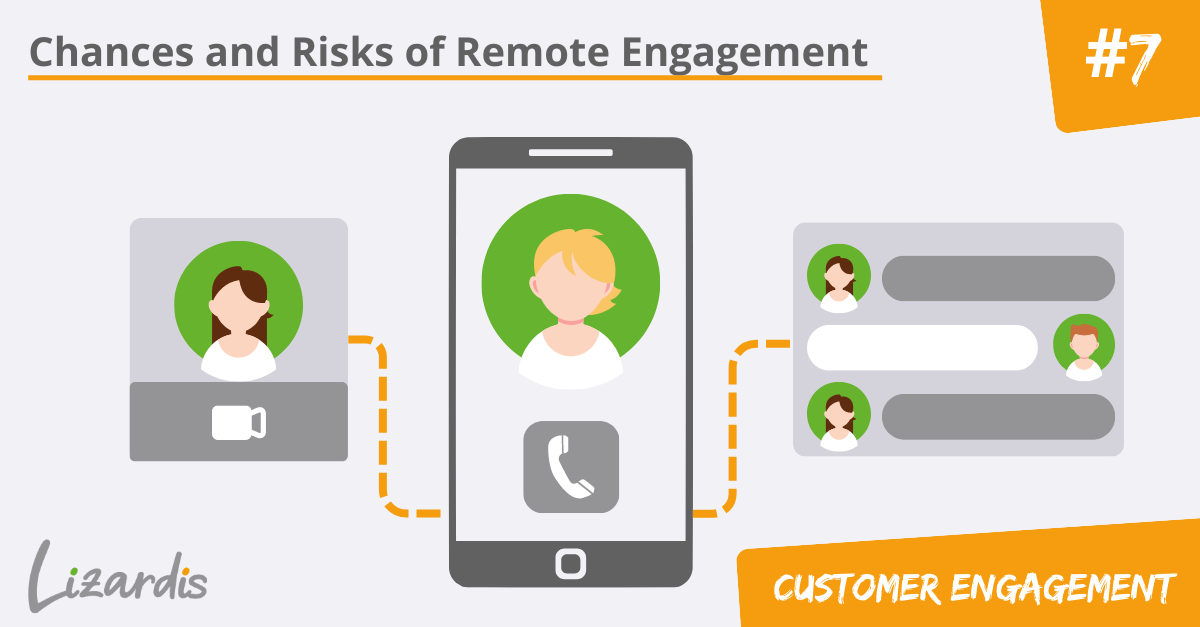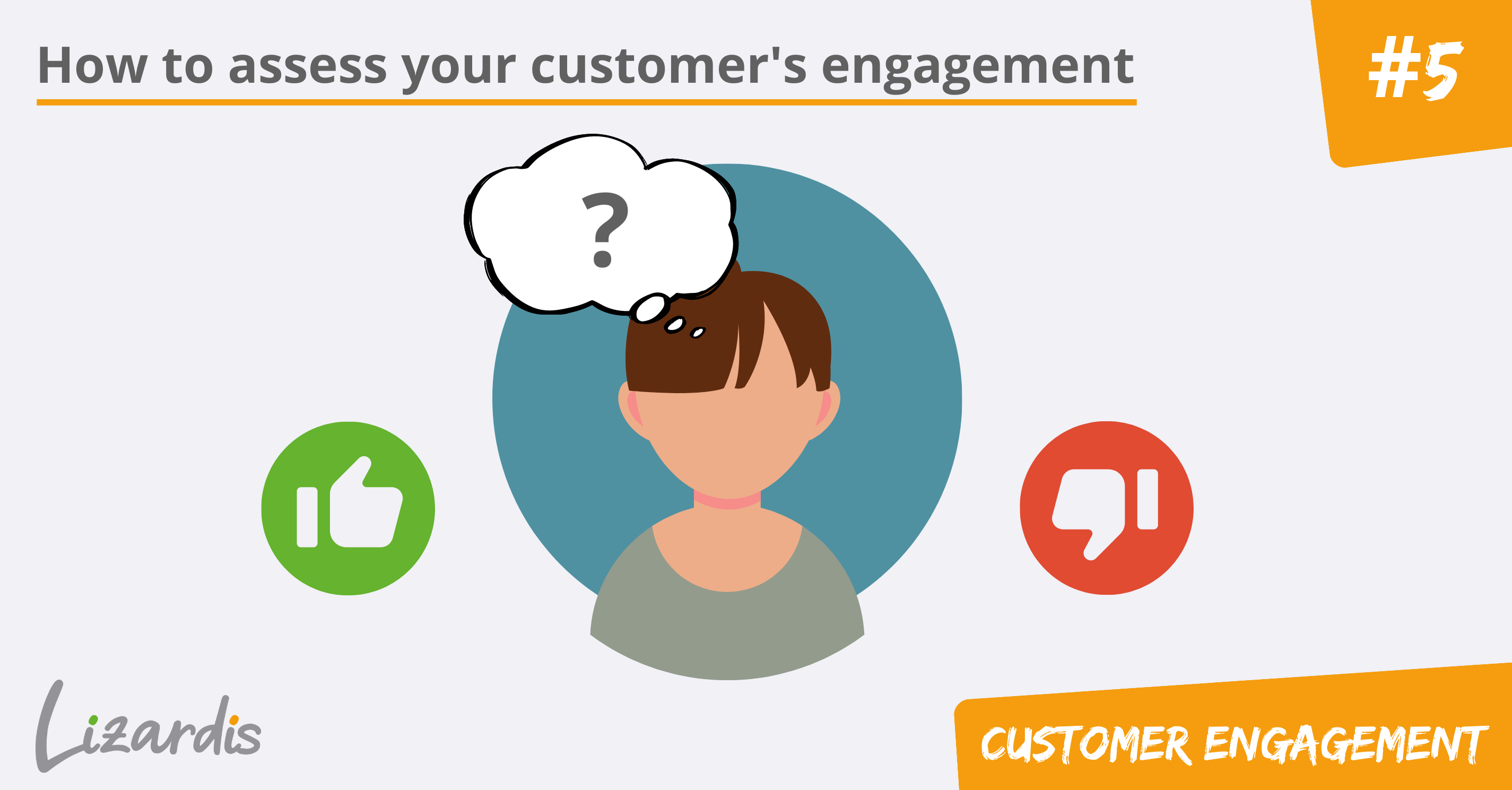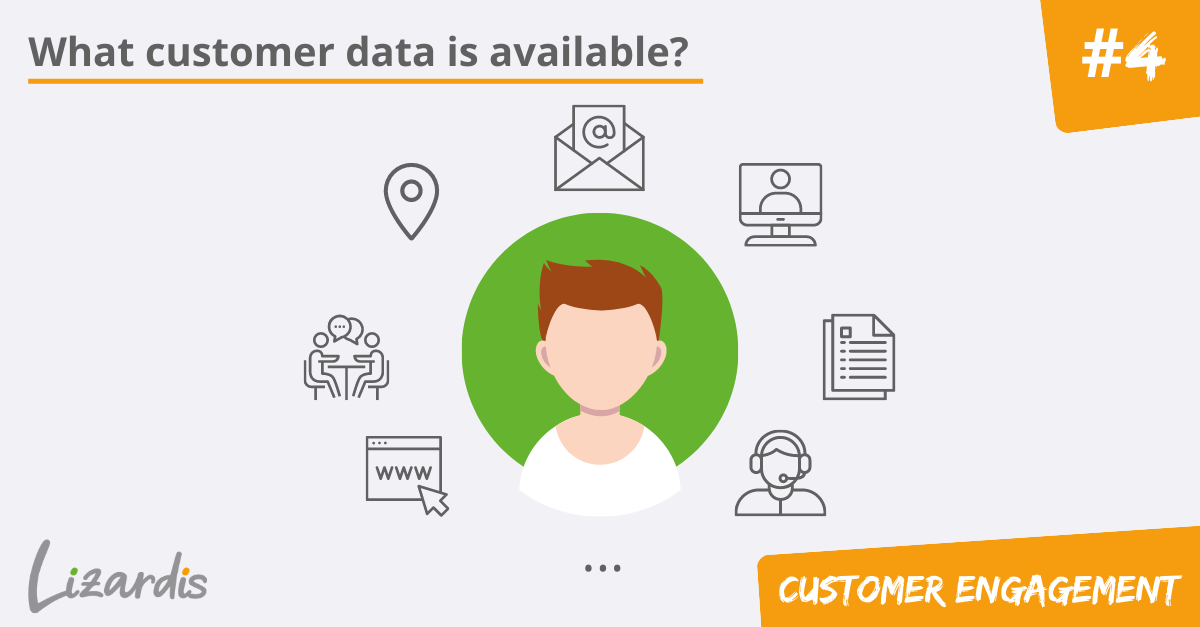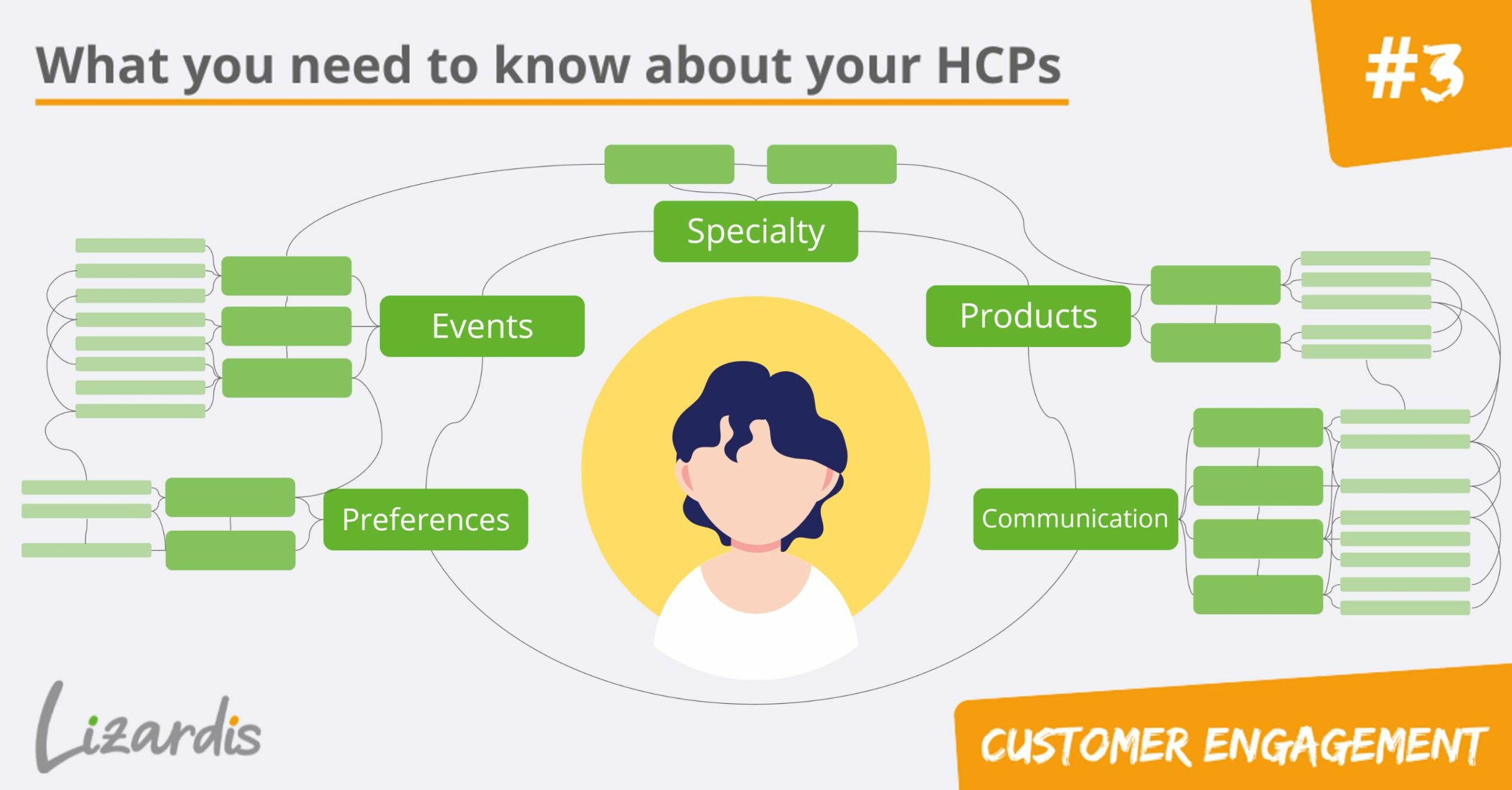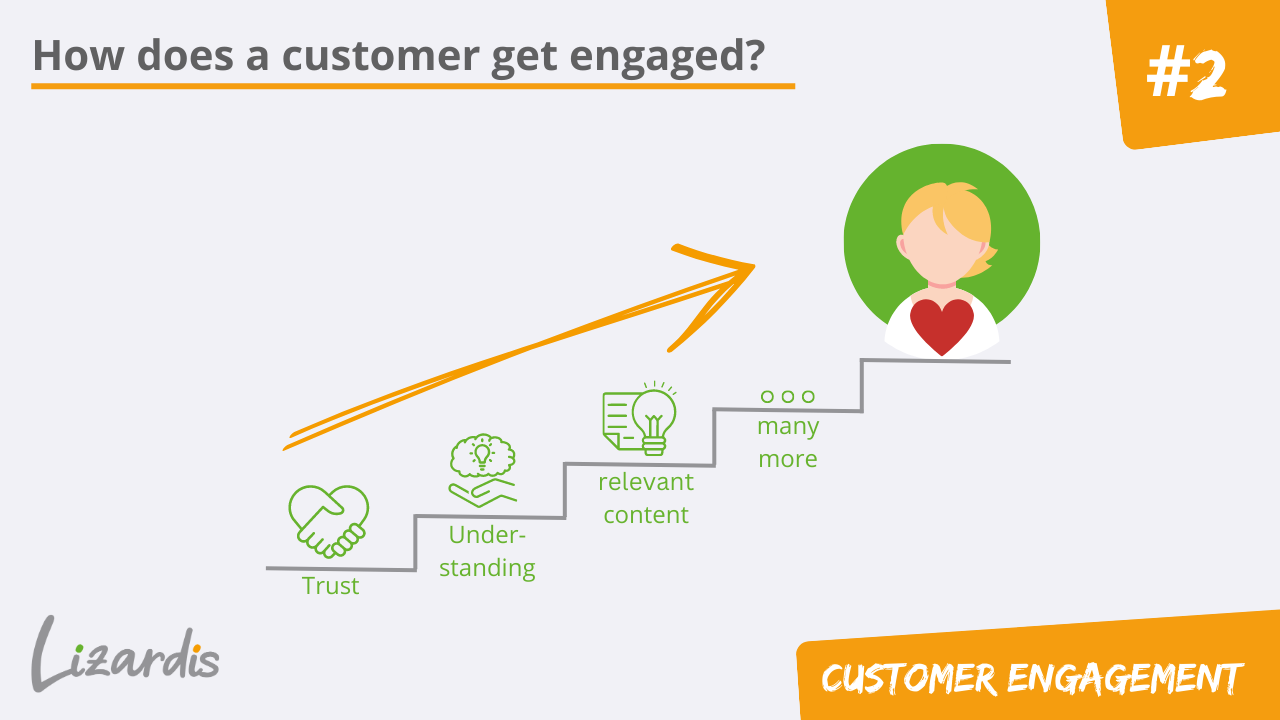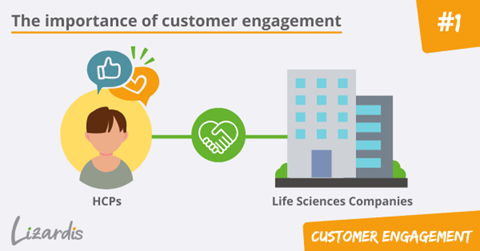Hanover, 22 May 2023
In my previous post, I discussed what data is fundamentally relevant to customer engagement and how to identify whether an HCP is engaged and feels a connection to a life sciences company.
Following this initial introduction to the topic, today I will go into more detail about the possible customer engagement data that can be collected using the Veeva CRM system.
There are different sources of data collection available depending on which channels a life sciences company uses to interact with HCPs. The choice of channels depends on whether a multichannel, omnichannel or a unified commerce strategy is being pursued already.
If we look at Veeva CRM as a system that can be used to map a large part of the different strategies’ channels by means of sales or medical reps, we are basically talking about the following channels:
- On-site visits to HCPs
- Telephone
- Video conferences
- Events
- Fax (with restrictions)
Below, we will take a closer look at each channel to understand which of them can provide relevant data for customer engagement.
Why are HCPs being visited on-site?
HCPs receive sales and medical sales representatives. By tradition, this channel is still favored by both sides. However, the age of the HCP and the sales rep, to stay with this example, is not solely responsible for the popularity of said channel. Rather, both cultural and regional aspects are decisive for the use of the channel “visit”.
Moreover, for many sales reps, it is still primarily about seeing “the whites of the doctor’s eye,” i.e., immediate physical contact, such as in everyday rituals like a handshake when greeting someone.
Conversely, for many HCPs, a visit by the representative is a form of appreciation that they would not want to miss, especially if the visits occur on a regular basis.
During the course of a visit, the following data may be documented or collected:
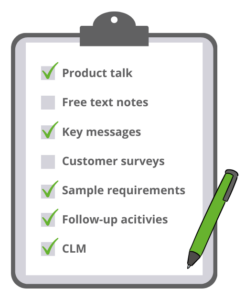
All this information can be mapped and subsequently analyzed in a classic Veeva CRM call report.
In this regard, I would like to emphasize one aspect in particular: the communication of key messages. To gain the loyalty of an important HCP, customers usually go through various phases within the customer journey, as we have already described in our separate blog series. For example, before a doctor can write the name of the product on a prescription for the first time, he or she must first have determined the benefit to the patient. This is usually done by using core messages or key messages.
However, this involves not only delivering the message, but also backing it up with various arguments and documenting the customer’s reaction as a result. This can be done in various ways, such as selecting appropriate messages, arguments and reactions from selection lists offered in the visit report.
In addition, instead of various lists, it is possible to use a set of suitable slides as part of a digital CLM presentation on which the customer’s reaction to the key message or the respective argument can be recorded. Ultimately, however, the use of hybrid forms is also conceivable.
The data obtained in this way allow a wide range of conclusions to be drawn:
- on the HCP’s view of the product and the company
- on the quality of the materials in terms of the degree of conviction that can be achieved with them,
- as well as on the format by which the sales representative talks to the customer
It can thus be ascertained that an on-site visit offers a variety of interactions and information making it a very attractive channel for the field service as “you kill a lot of birds with one stone”. Additionally, one of the reasons why this channel is so important is that it can be used to reach approximately 30% of the HCPs who, for various reasons, hardly use any digital channels or none at all.
Generally, life sciences companies are well advised to continue to rely on the F2F contact channel to share news and offer services to HCPs or patients. Most customers are used to being served in this way, and it is worth remembering that there are quite a few key opinion leaders among these customers who have the power to influence their network of HCPs.
At the same time, life sciences companies have had to learn that HCPs are generally more restrictive when it comes to their management of time and no longer offer Sales Reps unrestricted access to their premises. It is necessary to develop meaningful concepts for terms such as “appointment doctors” (i.e. doctors who will receive visitors only by prior appointment) or “access restriction” so that contacts with HCPs can be realized.
What opportunity do emails offer?
In addition to a face-to-face contact, an email contact is an attractive alternative for several reasons; after all, writing emails
- can be realized with little time expenditure
- is economical as well as sustainable
- and offers the chance to gather a lot of information about the HCP.
Moreover, the point in time at which the email is written does not depend on whether the customer is currently online or offline. Accordingly, the HCP can read the email without the Sales or Medical Rep sitting in front of his computer or holding the tablet in his hands.
Before the email channel can be used, the following questions must first be clarified, and parameters defined:
How can the HCP’s consent to use his email address be obtained?
- Are emails sent exclusively via MS Outlook or via Veeva’s Approved Email or is it possible to have a combination of both programs?
- Is there sufficient content, especially email templates suitable for Approved Email, that can be used and that provide answers to a wide range of the HCPs’ questions?
- Are sent emails of equal value or are they weighted appropriately relative to other channels? Are the requirements regarding visits or video conferences with HCPs reduced accordingly or are they, from the perspective of the sales force, mere additional work?
Once these questions have been resolved, the email channel, especially when using the Approved Email feature from Veeva CRM, offers many opportunities to gather data about the HCP and his or her interests, such as:
- Who sent the HCP, which Approved Email, when, and with which content?
- Has the approved email been opened and when?
- Have one or more links in the Approved E-mail been clicked on? And on which link exactly?
- Has a link been clicked on more than once?
- Did the HCP react to the Approved Email and were there any further Approved Emails with additional key messages and information?
- Is the HCP also interested in receiving newsletters on various topics?
If the life sciences company has obtained the HCP’s consent to use his or her email address, another channel that can be used is videoconferencing or remote calling, since the invitation to dial in is provided via email.
What information does a life sciences company gain from remote calls?
The COVID-19 pandemic has greatly increased the conduct of remote calls with HCPs with tools such as Veeva Engage (which is fully integrated within Veeva CRM). However, with the pandemic subsiding and the return to business as usual, the usage of this channel is decreasing in many countries. The reasons for the dwindling appeal are manifold and need to be sought on both sides, among HCPs and Sales Reps. We will address these causes in more detail at a later point in time.
As a Sales Rep, I receive the same information and can basically perform the same actions as during an on-site visit, but in less time and with less resource input. Even a sample request is no longer a problem, as the HCP’s signature can be captured remotely.
In addition, a so-called compliant chat can now also be mapped in a remote call, i.e. the documented communication between HCPs and sales reps, consisting of questions, answers and comments. However, in the process, certain terms and statements that contradict compliance requirements will be removed. Furthermore, the remote call can be used as a channel to conduct not only 1:1, but also 1:few or even 1:many conversations. As a result, this channel is also interesting for event management, among others.
What data do I obtain from events?
Regardless of the underlying motivation for why life sciences companies support or independently host educational events for HCPs on the one hand, and why HCPs wish to attend on the other, an event that a client attends always provides an opportunity to gather additional information about
- his questions,
- the topics that interest and concern him and,
- the circle of colleagues with whom he associates.
Often, however, it is also the only way to meet an HCP more frequently than just in the HCO in which they work.
Whether the HCP shows up in person, attends remotely, or even just dials in by phone – all of these options provide important information regarding his or her preferences and, if necessary, simplify the planning of further interactions.
For example: I have accessed another channel if I have the HCP’s phone number and am allowed to use it (even if I have only ever used that phone number to make an appointment).
The telephone – a valuable channel?
It has always been common practice for Sales Reps and MSLs to contact the HCP by phone or cell phone. Generally, this “channel” has been used to schedule appointments or to respond to questions from the HCP. However, these phone or cell phone contacts were not always considered complete interactions and were often not recorded in the CRM system, which led to associated administrative activities being overlooked.
It was not until the pandemic that a change in thinking took place. During lockdowns or times when HCPs were not meeting with reps, the phone was the only channel accepted by HCPs and reps, in addition to email and the growing use of remote calls, which became more common during the pandemic.
The phone call was already established to exchange information regarding HCP issues, as well as updates on products and therapeutic approaches for various casuistries. Coupled with this elevation of the phone as a channel, many life sciences companies asked reps to document contacts and content related to phone interactions in Veeva CRM as a way of gathering additional information.
The fax – technologically outdated, but often without a substitute
Numerous life sciences companies operating in the OTC, CHC or medical technology sectors still rely on fax. This is because many HCOs, such as pharmacies, have only limited Internet access.
For this reason, some order processes still run via fax. Even sales rep announcements about upcoming visits or discount promotions that are being advertised are still frequently communicated via fax, despite the availability of other channels.
Whether this information is then also mapped in Veeva CRM of course depends on the company’s individual configuration, but also on whether the sales rep documents additional contacts and selects the fax as a communication channel in the process.
Creating a more comprehensive customer picture through the use of diverse channels
In summary, we can conclude that the use of additional channels besides the on-site visit leads to a significantly higher information density. This information can be analyzed retrospectively to assess whether a customer is engaged and whether the customer engagement was successful.
The fact that all these channels can basically be used in CRM systems such as Veeva CRM inevitably makes it easier for the Sales Rep as well as the MSL to plan, report and analyze information, including those of other end users such as Management, Salesforce Effectiveness or Commercial Excellence, Marketing and Medical.
With this, the foundation is set for considering other channels that are not mapped in Veeva CRM, but are nonetheless just as important.
Before we move on to this topic, however, I will first provide a deeper insight into the remote call channel and show why this channel, despite the Covid-19 pandemic and its associated limitations, receives so little attention.
You want more insights?
Check out our other blog articles about customer engagement!
Omnichannel-Management: From product centricity to customer centricity (3/3)
How do you measure the success of your omnichannel strategy and customer-centric approach? Learn more about possible methods for measuring omnichannel efforts.
Omnichannel-Management: From product centricity to customer centricity (2/3)
The successful implementation of omnichannel requires an organizational change away from traditional silo thinking towards customer orientation.
Rep Triggered Email platforms – What is the most sensible way to integrate this channel to promote customer loyalty?
In this article, I will review the so-called Rep Triggered Emails channel. I will outline what approaches exist for this channel in the life sciences industry, what tools are used and what data can be obtained in this way.
Remote Engagement – what opportunities does it offer for life science companies?
In this post, I will focus on the remote call channel (also referred to as remote engagement, video call, or video conferencing), in particular and describe how to successfully use the channel.
Use this data to assess your customer’s engagement as a life sciences company
Which data and insights help me to assess customer engagement as a life sciences company? And how can I improve customer engagement? Learn more in this article.
What customer data is available to life sciences companies?
Correct data collection & processing is not the favorite topic of many, but immensely important! Without data no information & therefore no reliable statements.
This is what you should know about your customers in the life sciences industry
Learn here, what you as a life sciences companies should know about your customers to inspire them to further engagement, and how to come to that knowledge.
How to turn a customer into an engaged customer
There are several factors for influencing a customer to become an engaged customer. These include - amongst others - trust, understanding and relevant content. Learn more.
What is customer engagement and why is it so important?
Everyone is talking about customer engagement. But what excatly is it, why is it important and how do I optimize customer engagement? Learn more in our blog post.


